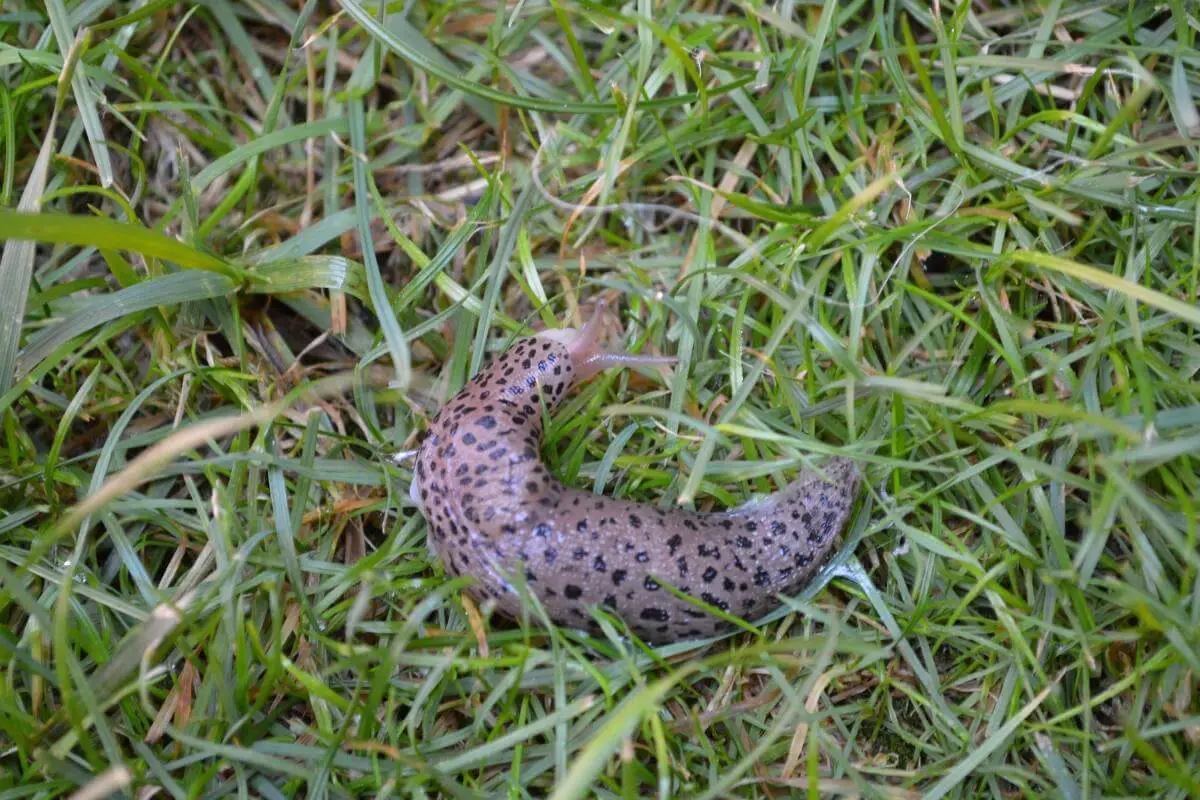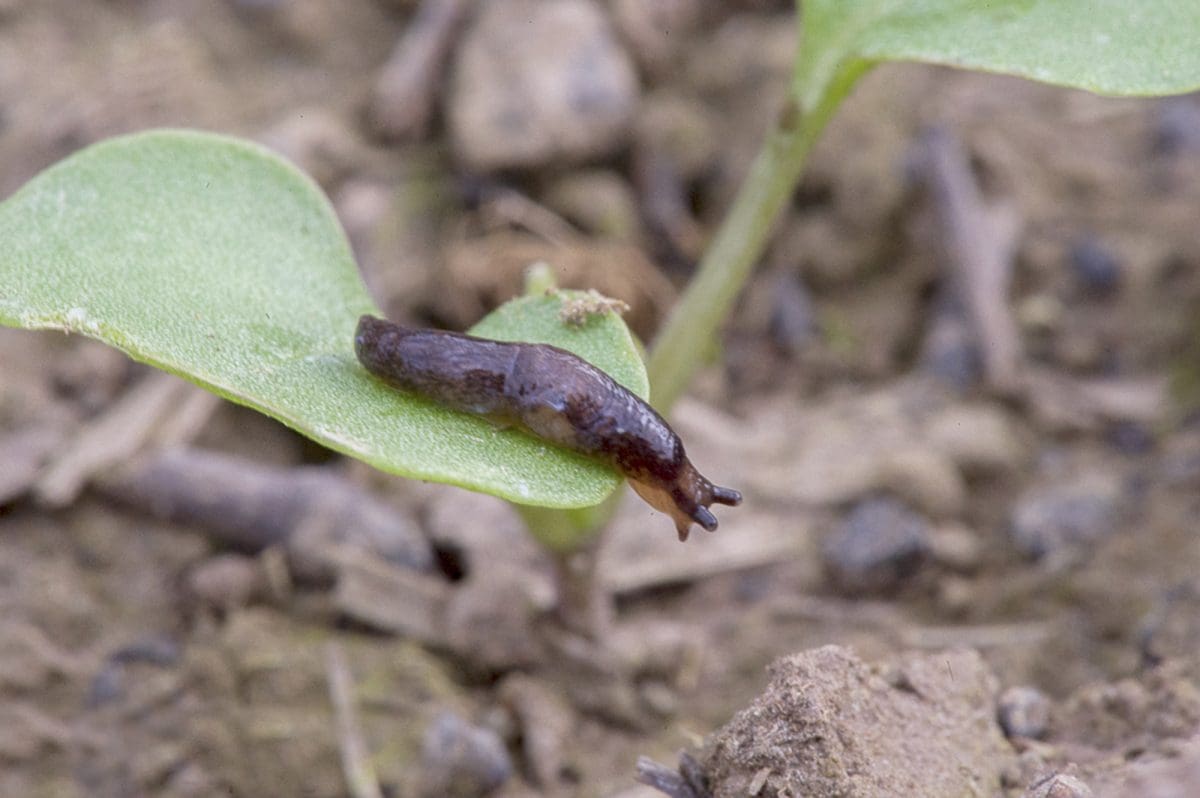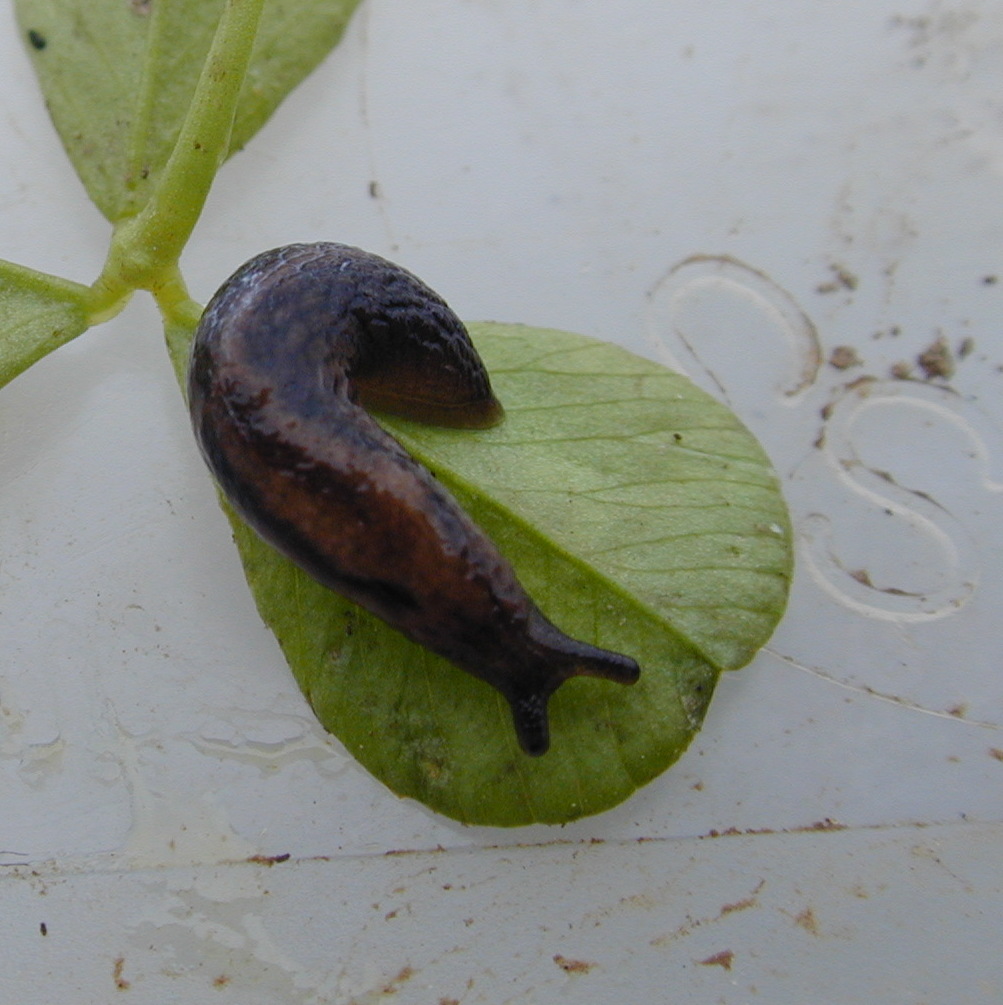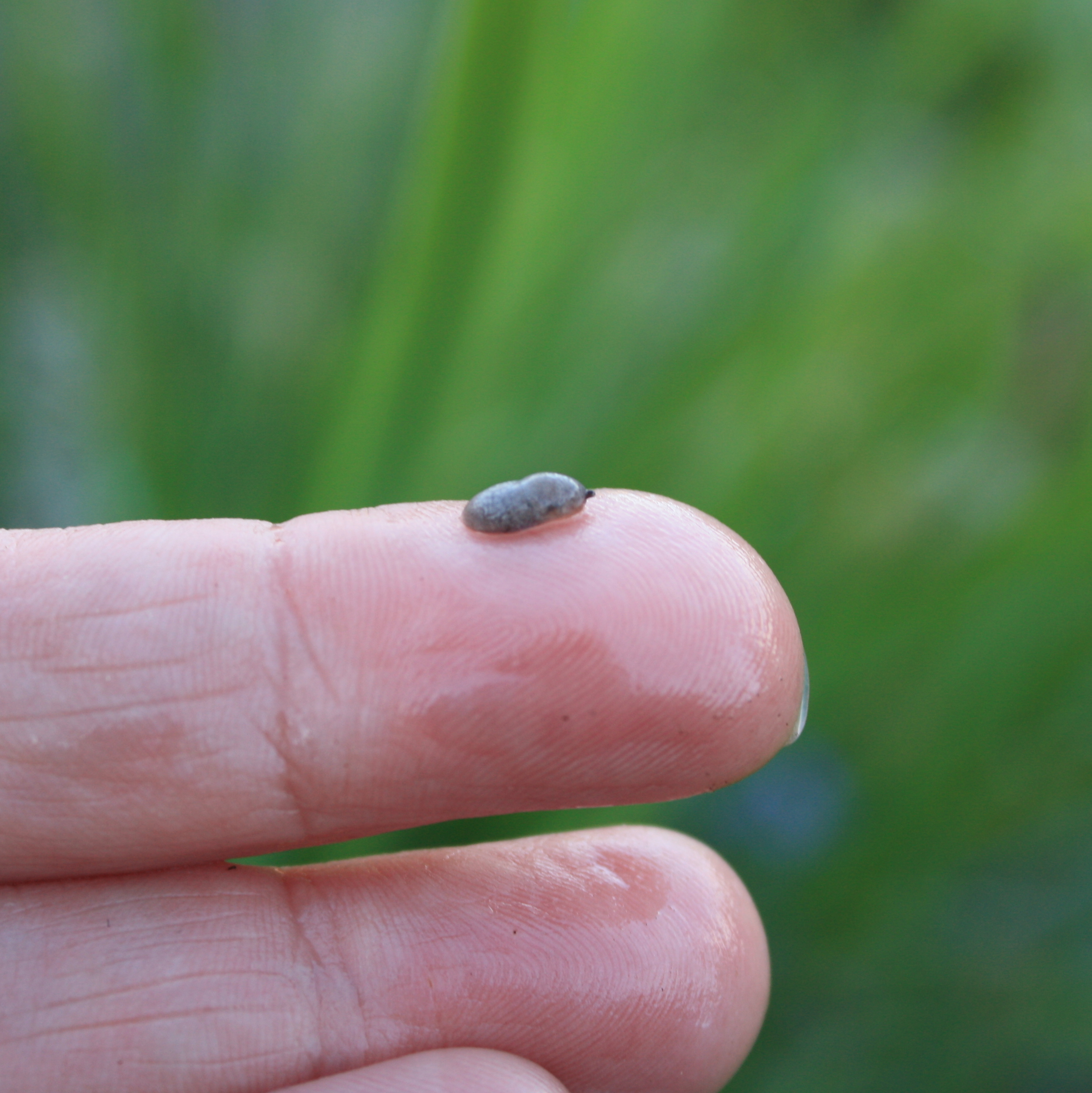What Triggers Slug Activity
Slugs are ectothermic, meaning their body temperature is regulated by the environment around them. As a result, their activity is heavily influenced by temperature, humidity, and daylight hours. Understanding these factors can help predict when slugs are likely to emerge and become active.
Temperature plays a crucial role in slug activity. Most slug species thrive in temperatures between 40°F and 70°F (4°C and 21°C). When temperatures rise above 70°F (21°C), slugs tend to become less active, seeking shade and moisture to avoid dehydration. Conversely, when temperatures drop below 40°F (4°C), slugs enter a state of dormancy, often burrowing underground to escape the cold.
Humidity is another essential factor in slug activity. Slugs require a certain level of moisture to survive, and high humidity allows them to move more efficiently. When the air is too dry, slugs are forced to seek shelter and conserve energy. In contrast, when the air is too humid, slugs can become overactive, leading to increased feeding and breeding.
Daylight hours also impact slug activity. Most slug species are nocturnal, meaning they are most active at night. During the day, slugs tend to hide in dark, moist areas, such as under rocks, logs, or in underground burrows. As daylight hours decrease, slugs begin to emerge, feeding on plants and other organic matter.
By understanding these environmental triggers, gardeners and homeowners can better anticipate when slugs are likely to emerge and take proactive steps to manage their populations. For example, during periods of high humidity and mild temperatures, it’s essential to monitor plants closely for signs of slug damage and take action to protect them. By being aware of these factors, individuals can reduce the risk of slug infestations and maintain a healthy, balanced ecosystem.
So, when do slugs come out? The answer depends on various environmental factors, including temperature, humidity, and daylight hours. By understanding these triggers, individuals can better predict slug activity and take steps to manage their populations, ultimately protecting their plants and maintaining a healthy environment.
How to Identify Slug-Friendly Weather Conditions
To anticipate slug activity, it’s essential to identify the optimal weather conditions that favor their emergence. Slugs thrive in environments with mild temperatures, high humidity, and adequate moisture. By monitoring these conditions, gardeners and homeowners can prepare for slug season and take proactive steps to manage their populations.
The ideal temperature range for slug activity is between 40°F and 70°F (4°C and 21°C). During this period, slugs are most active, and their metabolism is at its peak. Temperatures above 70°F (21°C) can lead to slug dormancy, while temperatures below 40°F (4°C) can cause them to burrow underground.
Humidity is another critical factor in slug activity. Slugs require a relative humidity of 80% or higher to thrive. When the air is too dry, slugs are forced to seek shelter and conserve energy. Conversely, when the air is too humid, slugs can become overactive, leading to increased feeding and breeding.
Soil moisture is also essential for slug activity. Slugs need moist soil to move efficiently and feed on plants. When the soil is too dry, slugs are forced to seek alternative sources of moisture, such as plants with high water content.
To monitor these conditions, gardeners and homeowners can use various tools, such as thermometers, hygrometers, and soil moisture sensors. By tracking these conditions, individuals can anticipate slug activity and take proactive steps to manage their populations.
For example, during periods of high humidity and mild temperatures, gardeners can expect slugs to be more active. By monitoring these conditions, individuals can take steps to protect their plants, such as using physical barriers, removing attractants, and applying natural deterrents.
By understanding the optimal weather conditions for slug activity, gardeners and homeowners can better anticipate when slugs are likely to emerge and take proactive steps to manage their populations. This knowledge can help individuals protect their plants and maintain a healthy, balanced ecosystem.
So, when do slugs come out? The answer depends on various environmental factors, including temperature, humidity, and soil moisture. By monitoring these conditions, individuals can anticipate slug activity and take proactive steps to manage their populations.
Slug Life Cycle: Understanding the Different Stages
The life cycle of a slug consists of three main stages: egg, hatchling, and adult. Understanding these stages can help predict when slugs are likely to be active and provide valuable insights into their behavior.
The egg stage typically lasts several weeks, during which time the eggs are protected by a layer of mucus and are often laid in a sheltered location. The eggs hatch into hatchlings, which are small, slug-like creatures that feed on algae and other small organisms. This stage usually lasts several weeks to a few months, depending on the species and environmental conditions.
As the hatchlings grow, they molt several times, eventually reaching the adult stage. Adult slugs are the most active stage of the life cycle, and they can live for several months to a year or more, depending on the species and environmental conditions. During this stage, slugs feed on a wide range of plants, including leaves, stems, and flowers.
Understanding the different stages of a slug’s life cycle can help predict when they are likely to be active. For example, during the egg stage, slugs are not active, and their eggs are often protected by a layer of mucus. However, as the eggs hatch and the hatchlings emerge, slugs begin to become more active, feeding on small organisms and growing rapidly.
As the hatchlings reach the adult stage, they become even more active, feeding on a wide range of plants and causing significant damage to gardens and crops. By understanding the different stages of a slug’s life cycle, gardeners and homeowners can anticipate when slugs are likely to be active and take proactive steps to manage their populations.
For example, during the spring and summer months, when slugs are most active, gardeners can use physical barriers, such as copper tape or crushed eggshells, to deter slugs from reaching their plants. They can also use natural deterrents, such as garlic or hot pepper spray, to repel slugs and protect their plants.
By understanding the life cycle of slugs and anticipating when they are likely to be active, gardeners and homeowners can take proactive steps to manage their populations and protect their plants. This knowledge can help individuals maintain a healthy, balanced ecosystem and reduce the risk of slug infestations.
So, when do slugs come out? The answer depends on the stage of their life cycle and the environmental conditions. By understanding the different stages of a slug’s life cycle, individuals can anticipate when slugs are likely to be active and take proactive steps to manage their populations.
Regional Variations: When Slugs Emerge in Different Parts of the World
The timing of slug emergence varies significantly depending on the region, climate, and geography. In general, slugs are more active in areas with mild winters and cool, moist summers. However, the specific timing of slug emergence can differ greatly depending on the location.
In the Northern Hemisphere, slugs typically emerge in the spring, around March or April, when the soil has warmed up and the air is filled with moisture. In areas with mild winters, such as the Pacific Northwest, slugs may be active year-round. In contrast, in areas with cold winters, such as the Northeast United States, slugs may not emerge until late spring or early summer.
In the Southern Hemisphere, the timing of slug emergence is reversed. In Australia, for example, slugs are most active during the summer months, from December to February. In South Africa, slugs are active during the spring and summer months, from September to February.
In addition to regional variations, the timing of slug emergence can also vary depending on the specific climate and geography of an area. For example, in areas with high elevations, slugs may emerge later in the spring due to the cooler temperatures. In areas with high levels of rainfall, slugs may be active year-round.
Understanding the regional variations in slug emergence can help gardeners and homeowners anticipate when slugs are likely to be active in their area. By knowing when slugs are likely to emerge, individuals can take proactive steps to manage their populations and protect their plants.
For example, in areas where slugs are active year-round, gardeners may need to use ongoing control methods, such as physical barriers or natural deterrents, to protect their plants. In areas where slugs are only active during certain times of the year, gardeners may be able to use more targeted control methods, such as applying pesticides during the peak slug activity period.
By understanding the regional variations in slug emergence, individuals can develop effective strategies for managing slug populations and protecting their plants. This knowledge can help individuals maintain a healthy, balanced ecosystem and reduce the risk of slug infestations.
So, when do slugs come out? The answer depends on the region, climate, and geography. By understanding the regional variations in slug emergence, individuals can anticipate when slugs are likely to be active and take proactive steps to manage their populations.
How to Prepare for Slug Season: Tips for Gardeners and Homeowners
Preparing for slug season is essential to protect your plants and prevent infestations. By taking proactive steps, you can reduce the risk of slug damage and maintain a healthy, balanced ecosystem. Here are some tips for gardeners and homeowners to prepare for slug season:
Protect Your Plants: Use physical barriers, such as copper tape or crushed eggshells, to deter slugs from reaching your plants. You can also use row covers or fine-mesh screens to prevent slugs from accessing your plants.
Remove Attractants: Slugs are attracted to moisture, food, and shelter. Remove any debris, weeds, or decaying plant material that may attract slugs to your garden. Keep your garden clean and free of clutter to reduce the risk of slug infestations.
Use Natural Deterrents: Certain plants, such as garlic, hot peppers, and chamomile, can repel slugs. Plant these species around the perimeter of your garden to deter slugs from entering. You can also use natural deterrents, such as diatomaceous earth or iron phosphate, to repel slugs.
Monitor for Slugs: Regularly inspect your plants for signs of slug damage, such as holes or tears in leaves. Check for slugs at night, when they are most active, and remove any that you find.
Use Traps: Create a slug trap using a plastic container, some beer, and a few rocks. Bury the container in the soil, and the slugs will be attracted to the beer and fall into the trap. Dispose of the slugs humanely, and repeat the process as necessary.
By following these tips, you can prepare for slug season and reduce the risk of infestations. Remember to be proactive and take steps to protect your plants before the slugs emerge. By doing so, you can maintain a healthy, balanced ecosystem and enjoy a successful gardening season.
So, when do slugs come out? The answer depends on various factors, including temperature, humidity, and daylight hours. By understanding these factors and taking proactive steps to prepare for slug season, you can reduce the risk of infestations and maintain a healthy, balanced ecosystem.
Common Slug Species: When to Expect Them in Your Area
There are many different species of slugs, each with their own unique habits, habitats, and emergence times. Understanding the common slug species in your area can help you anticipate when they are likely to be active and take steps to manage their populations.
One of the most common slug species is the garden slug (Arion hortensis). This species is found throughout much of North America and Europe, and is known for its grayish-brown color and distinctive keel on its back. Garden slugs are typically active at night, and can be found in a variety of habitats, including gardens, parks, and woodlands.
Another common slug species is the leopard slug (Limax maximus). This species is found in many parts of the world, including North America, Europe, and Asia. Leopard slugs are known for their distinctive leopard-like spots, and are typically active at night. They are often found in gardens, parks, and woodlands, and are known to feed on a wide range of plants.
The banana slug (Ariolimax columbianus) is a common slug species found in the Pacific Northwest region of North America. This species is known for its bright yellow color and distinctive shape, and is typically active at night. Banana slugs are often found in gardens, parks, and woodlands, and are known to feed on a wide range of plants.
Understanding the common slug species in your area can help you anticipate when they are likely to be active and take steps to manage their populations. By knowing when to expect these slugs, you can take proactive steps to protect your plants and prevent infestations.
So, when do slugs come out? The answer depends on the species, as well as the time of year and weather conditions. By understanding the common slug species in your area and their emergence times, you can take steps to manage their populations and protect your plants.
It’s also important to note that different slug species may have different activity patterns, so it’s essential to research the specific species in your area to understand their habits and habitats. By doing so, you can develop effective strategies for managing slug populations and maintaining a healthy, balanced ecosystem.
Monitoring Slug Activity: How to Track These Pests
Monitoring slug activity is essential to managing their populations and preventing infestations. By tracking their movement, identifying feeding patterns, and detecting signs of infestation, you can take proactive steps to protect your plants and prevent damage.
One of the most effective ways to monitor slug activity is to use traps. There are several types of traps available, including pitfall traps, bait traps, and sticky traps. Pitfall traps involve placing a container in the ground and filling it with a liquid bait, such as beer or yeast. Slugs are attracted to the bait and fall into the trap, where they can be collected and removed. Bait traps involve placing a bait, such as lettuce or cabbage, in a location where slugs are likely to be present. Slugs are attracted to the bait and can be collected and removed. Sticky traps involve placing a sticky surface, such as a sticky trap or a piece of cardboard coated with a sticky substance, in a location where slugs are likely to be present. Slugs are attracted to the surface and become stuck, allowing for easy collection and removal.
In addition to using traps, you can also monitor slug activity by inspecting your plants regularly. Look for signs of slug damage, such as holes or tears in leaves, and check for slugs on the underside of leaves or on the soil surface. You can also use a flashlight to inspect your plants at night, when slugs are most active.
Another way to monitor slug activity is to use a slug tracker. A slug tracker is a device that is placed in the soil and detects the presence of slugs. It can be used to track the movement of slugs and identify areas where they are most active.
By monitoring slug activity, you can take proactive steps to manage their populations and prevent infestations. This can include removing attractants, such as food and shelter, and using natural deterrents, such as copper or garlic. You can also use physical barriers, such as copper tape or crushed eggshells, to prevent slugs from reaching your plants.
So, when do slugs come out? The answer depends on various factors, including temperature, humidity, and daylight hours. By monitoring slug activity, you can anticipate when they are likely to be active and take steps to manage their populations.
Regular monitoring is essential to managing slug populations and preventing infestations. By tracking their movement, identifying feeding patterns, and detecting signs of infestation, you can take proactive steps to protect your plants and prevent damage.
Managing Slug Populations: Long-Term Strategies for Success
Managing slug populations requires a long-term approach that incorporates multiple strategies. By reducing attractants, using physical barriers, and promoting beneficial insects, you can create a healthy ecosystem that is less conducive to slug infestations.
One of the most effective ways to manage slug populations is to reduce attractants. Slugs are attracted to food, shelter, and moisture, so removing these attractants can help to discourage them from inhabiting your garden or yard. This can include removing weeds, debris, and other hiding places, as well as using physical barriers to prevent slugs from reaching your plants.
Another way to manage slug populations is to use physical barriers. Copper tape, crushed eggshells, and other materials can be used to create a barrier around your plants that slugs cannot cross. This can be especially effective for plants that are particularly susceptible to slug damage, such as hostas and lettuce.
Promoting beneficial insects is also an important part of managing slug populations. Beneficial insects, such as ground beetles and toads, feed on slugs and can help to control their populations. By creating a welcoming environment for these insects, you can encourage them to inhabit your garden and help to manage slug populations.
Integrated pest management (IPM) is a holistic approach to managing pests that involves using a combination of techniques to minimize harm to the environment. By using IPM, you can create a healthy ecosystem that is less conducive to slug infestations and promotes beneficial insects.
So, when do slugs come out? The answer depends on various factors, including temperature, humidity, and daylight hours. By understanding these factors and using long-term strategies to manage slug populations, you can create a healthy ecosystem that is less conducive to slug infestations.
By incorporating these strategies into your gardening or landscaping routine, you can create a healthy ecosystem that is less conducive to slug infestations. Remember to be patient and persistent, as managing slug populations can take time and effort.
By following these tips and using long-term strategies to manage slug populations, you can create a healthy ecosystem that is less conducive to slug infestations. This can help to promote beneficial insects, reduce the need for pesticides, and create a more sustainable gardening or landscaping practice.








